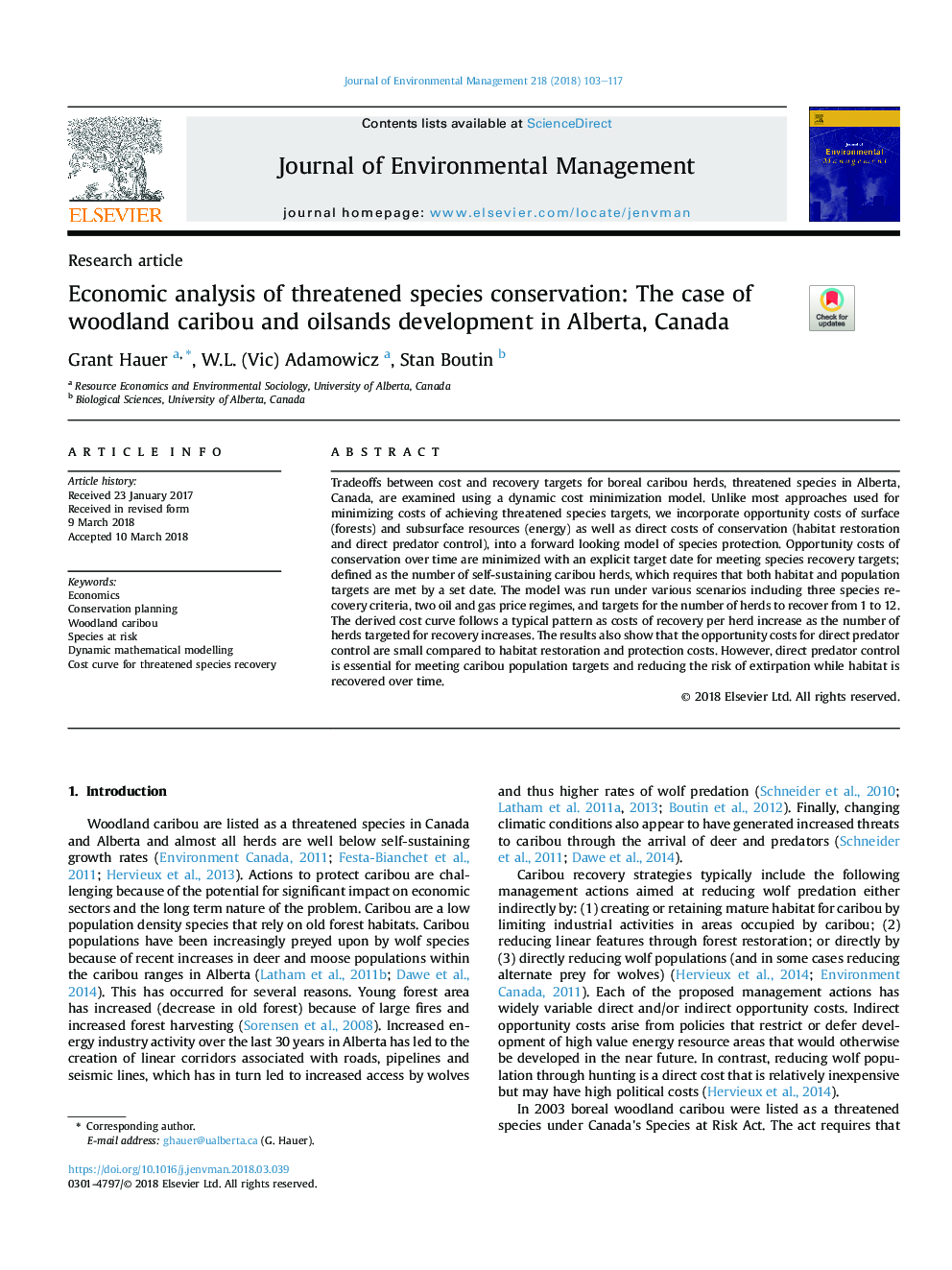| Article ID | Journal | Published Year | Pages | File Type |
|---|---|---|---|---|
| 7476863 | Journal of Environmental Management | 2018 | 15 Pages |
Abstract
Tradeoffs between cost and recovery targets for boreal caribou herds, threatened species in Alberta, Canada, are examined using a dynamic cost minimization model. Unlike most approaches used for minimizing costs of achieving threatened species targets, we incorporate opportunity costs of surface (forests) and subsurface resources (energy) as well as direct costs of conservation (habitat restoration and direct predator control), into a forward looking model of species protection. Opportunity costs of conservation over time are minimized with an explicit target date for meeting species recovery targets; defined as the number of self-sustaining caribou herds, which requires that both habitat and population targets are met by a set date. The model was run under various scenarios including three species recovery criteria, two oil and gas price regimes, and targets for the number of herds to recover from 1 to 12. The derived cost curve follows a typical pattern as costs of recovery per herd increase as the number of herds targeted for recovery increases. The results also show that the opportunity costs for direct predator control are small compared to habitat restoration and protection costs. However, direct predator control is essential for meeting caribou population targets and reducing the risk of extirpation while habitat is recovered over time.
Related Topics
Physical Sciences and Engineering
Energy
Renewable Energy, Sustainability and the Environment
Authors
Grant Hauer, W.L. (Vic) Adamowicz, Stan Boutin,
